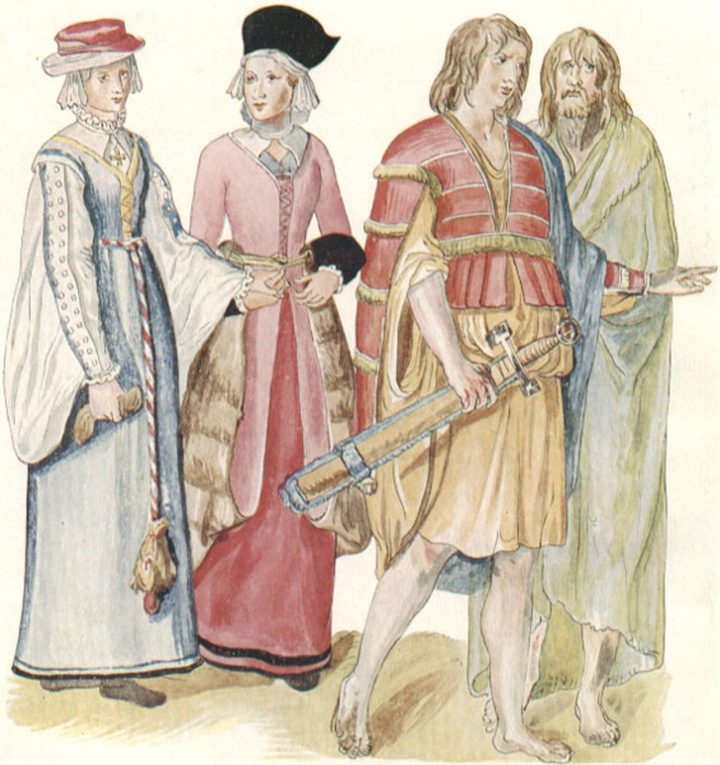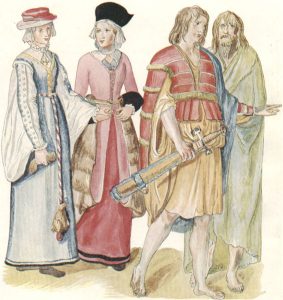
I begin every tour with a statement I was taught a long time ago. “Ireland is a country you feel, not understand” and I still hold this as a great truth about this place.
The Gaelic, and ‘Celtic’ culture of Ireland is ancient and predates ‘Western’ civilization. We often talk about the importance of the fact that ‘the Romans never came to Ireland’. This broadly allowed for a continuation of an ancient order in spiritual terms at least but also in literal terms. We remained a decentralised nomadic culture governed by Brehon Law and all that was involved in this. This was not always a peaceful society. Irish warrior culture was violent internally.
In musical terms the next development would come from Renaissance Europe via the Anglo-Norman invaders. As feudalism arrived in Ireland the system began to change. Initially there was sharp division between the Gaels and their Norman conquerors but the Black Death epidemic destroyed these lines and the elite of both societies would merge in the aftermath.

The Irish were noted for the speed and dexterity of their instrument playing by Giraldus Cambrensis as was their love of leisure and liberty which incurred much wrath. Despite the Statutes of Kilkenny in 1366 the emerging clans of the late 14th and 15th centuries were decidedly Gaelic with the FitzGerald’s being described as ‘more Irish than the Irish themselves’.
The amour courtois, the courtly love songs of the Norman world arrived in Ireland. These were an addition to the praise songs of the Irish file or court poet that were endemic in Irish courts. This is the origins of the Irish amhrán according to Gearóid Ó hAllmhuráin in his history of Irish music. The amour courtois was about deep human emotions and the love of nature. Romanticism in its nascent form.
Undoubtedly these two sides, the wildly energetic and the nuanced romanticism, merged into a unique complexity. Despite requests for compliance such as the Statutes of Kilkenny the Anglo-Norman became integrated with Gaelic culture. Renaissance ideals were playing out in Ireland in a lively and culturally rich society. Irish, English, Latin, Italian and Spanish were all spoken here. One of the casualties of the Irish v English (British) narrative is the dumbing down of this period of deep cultural change into simplified terms.
Post Tudor conquest the cultural impact was clear however. The role of the harper, the filé and the bard were outlawed and the death sentence was prescribed. The Gaelic order was over. The legal system switched and Brehon Law was replaced by English, or Common, Law.
The defeat of the battle of Kinsale led to the writing of “Caoineadh Uí Dhomhnaill” or “The Lament for O’Donnell” referring to Red Hugh O’Donnell. This is a classic piece still alive today and features on Bill Whelan’s album, The Seville Suite, commissioned by the Irish Government to commemorate the defeat. A new era was beginning, the old one was to crumble. The “Lament for Owen Roe O’Neill” was written by blind harper Turlough O’Carolan to commemorate this transition.
There is a fascinating research project, The MACMORRIS project, happening in Maynooth University on the cultural complexity of Ireland during this time. This aims to uncover the cultural traditions of the Gaelic speakers of the time as this has been largely left undiscovered.
This is very welcome research as it will put a lot of detail onto the Gaelic past of this nation’s historical memory blurring much of the blank and while binary perceptions.
As Ireland undergoes yet more huge cultural change the diverse complexities and nuances are best remembered as a reminder that little in this life is black and white and to reduce things to this binary stance is a cultural and political weaponisation at the best of times.
History is inherently backward looking but we must live forward looking. The past however shows us the way is often so complex it is best experienced as a vivid mirror to the present. As everything changes it always remains the same.
For research into the music itself a great place to start is the Irish Traditional Music Archive. Founded in 1987, the Irish Traditional Music Archive (ITMA) is home to the largest, most comprehensive collection of Irish traditional music, song, and dance in the world.